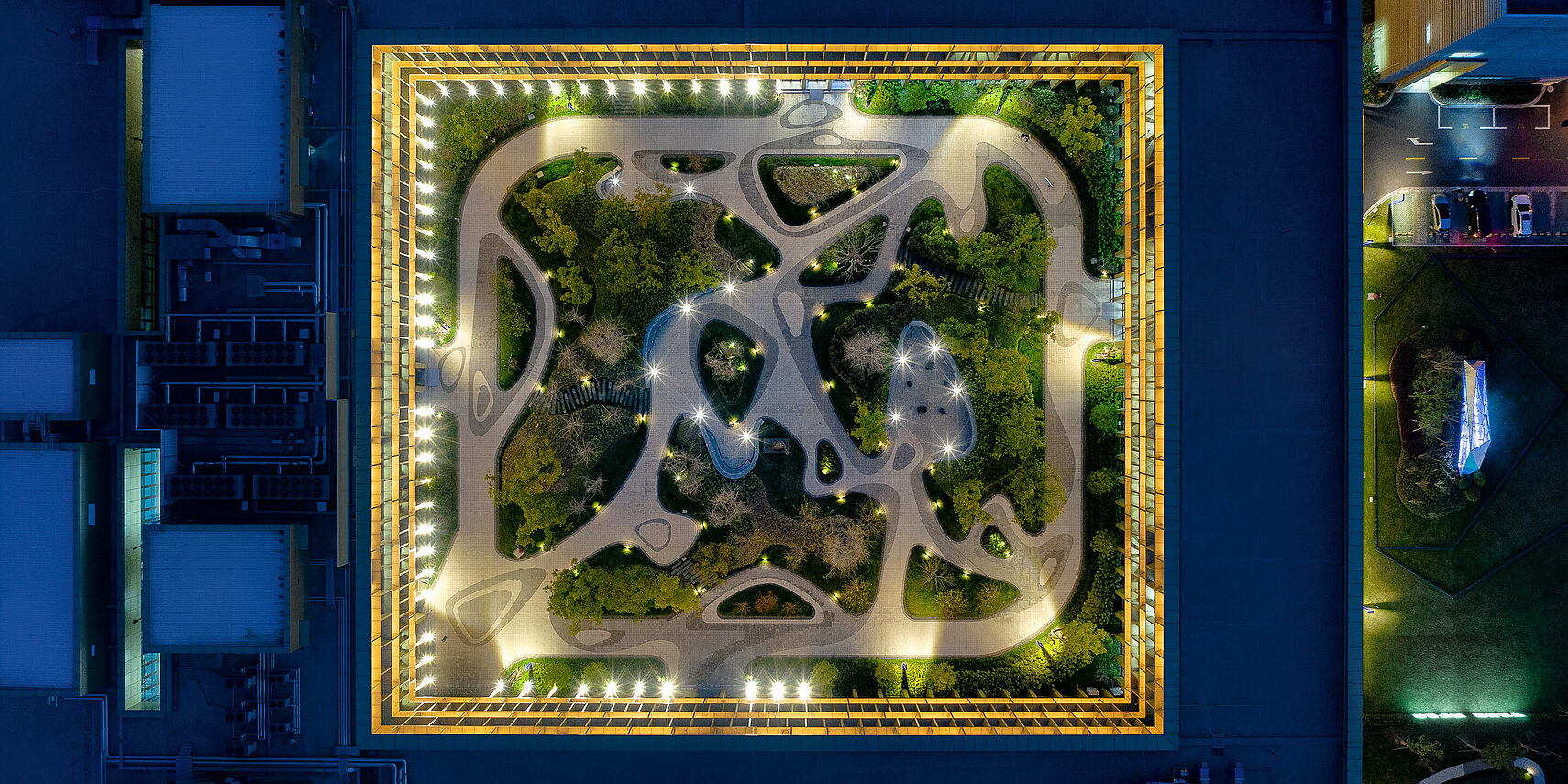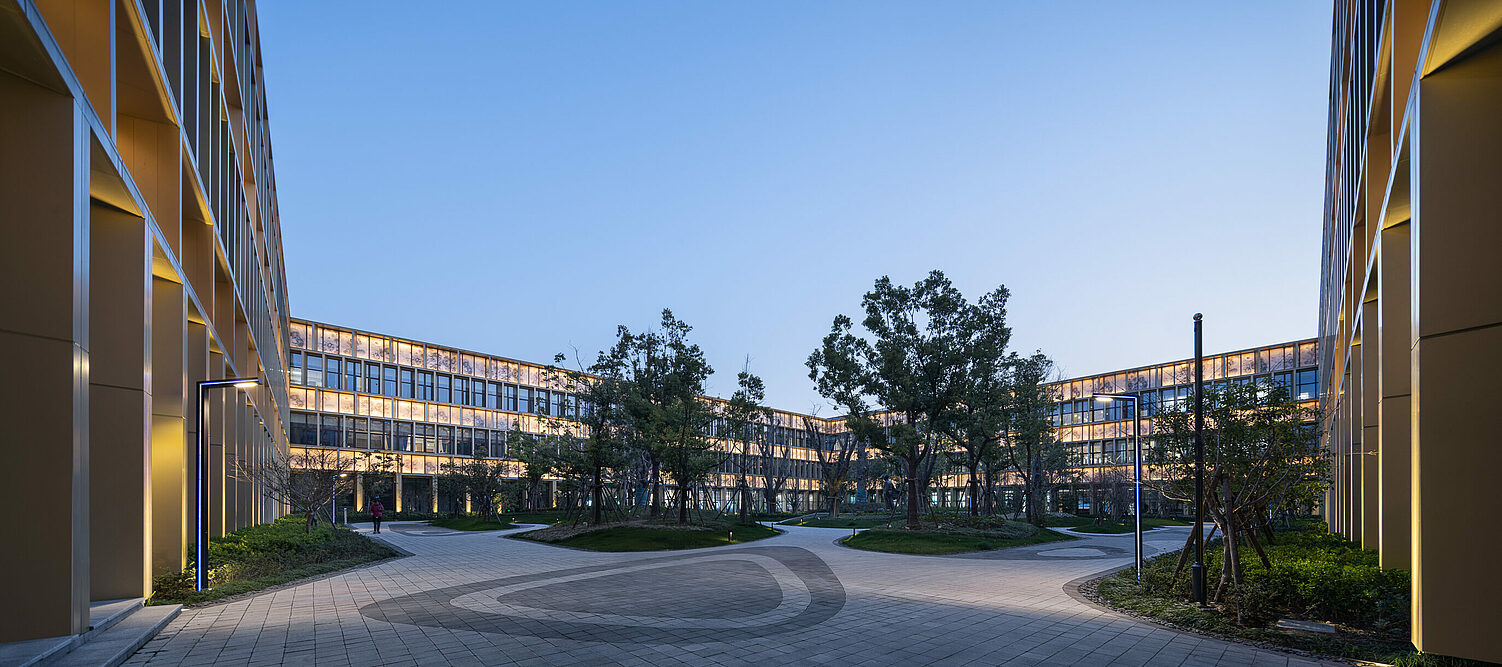More content
Health

An oncology diagnostic and treatment centre was planned for an old industrial site in an unappealing part of Shanghai, close to the Formula 1 race track. The client, a foundation established by a doctor celebrated in China, his name lending status to the project, wanted somewhere with the atmosphere of a luxury hotel.
Instead of demolishing the old factory, the building’s concrete walls – high-grade and still standing – were reused. The existing L-shaped structure was supplemented by a second L and extended to form a rectangle framing an interior courtyard. This courtyard, conceived as the centre and heart of the clinic, forms a hortus conclusus or enclosed garden that is both introspective and generously shaped, an oasis of quiet amid the surrounding hustle and bustle.
Fairy-tale enclosed garden
The height of the old building – three to four storeys – has been retained and determines the length and breadth of the courtyard, producing ideal proportions and a therapeutic atmosphere. Its stylised, almost artificial landscape with trees, carefully chosen plants and pathways has a fairy-tale feel. The courtyard also serves as a venue for concerts and other activities.

A new façade melds the old and new parts of the complex into a whole. The sculptural nature of the façade with its aluminium panels provides protection against sun, wind and rain and an architecturally rich interplay of light and shadow. This sculptural effect is underscored by the entrance surrounds that project slightly from the façade. The exterior solar protection features minimise solar energy inputs and provide excellent views from inside the building, while making it impossible to see in from the outside and so guaranteeing patient privacy.
The style and luxury of a hotel
Light and spacious areas inside the building – entrance, lobby, galleries with floor-to-ceiling windows, and wards, some with views of the trees in the narrow interior courtyard – and modern interior design using high-quality materials give the impression of a stylish hotel rather than a hospital, and emphasise the status of the centre and its target clientele. The luxuriously appointed patient rooms, including a number of suites, are a perfect match for the broader setting.
„The retention of existing structures can make a key contribution to sustainability. Here, an old factory was converted and extended rather than being demolished to produce a tabula rasa.“
Hugo Herrera Pianno
